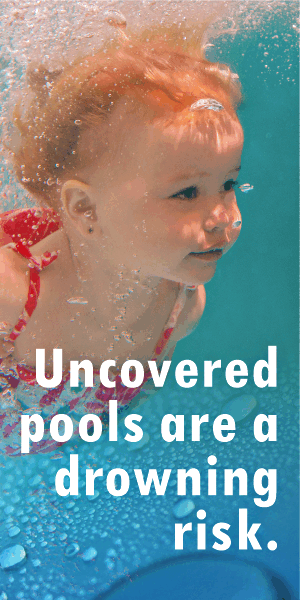The term ergogenic aids derives from the Greek words ergon (work) and genes (born), and mean any way of improving energy production. Competition is intense in the athletic world, and it can be hard to avoid the lure of sport supplements that promise improved physique and enhanced performance. A recent study revealed that 98% of teenage athletes use some form of dietary supplement, so this is a reality for any parent of a young sportsman. Some supplements act as performance supplements, with the aim of directly improving performance; some as sports foods, providing nutrients you could otherwise get from food; and some act as medical supplements to treat clinical problems. Today we address performance supplements. When addressing ergogenic aids, we need to answer 5 questions: Does it really work? Is it safe? Is it necessary? What is the correct dosage and regime and Is it legal? Being able to discern which ergogenic aids really work is made more complicated by aggressive marketing by sports nutrition companies that isn’t necessarily factually true. The teen desperate to build muscle, lose weight or improve performance can easily be tricked into spending a small fortune on products that really have no scientific support at all. To help us out with this, the Sports Science Institute of South Africa (SSISA) have grouped supplements into four categories: Group A are those that have sufficient evidence to support their use and can be recommended in certain situations, Group B are those that may have benefit but there isn’t enough evidence to support, Group C are unlikely to be beneficial, and Group D are those that are banned outright. It is advisable to stick to only Group A supplements that have strong scientific support and are legal – so these are the ergogenic aids we will focus on! Creatine is a supplement that has been proven to improve performance, strength, and muscle mass, and is very popular with young athletes. It is considered safe for adults, but what about teenagers? Creatine should be safe if your teenager is over 16, has already gone through puberty and is involved in serious competitive training. If not given in recommended dosages, however, excess creatine can damage the kidneys, cause fluid retention, and be broken down in to the toxin formaldehyde. So there are some basics to consider before adding creatine to your teenager’s regime – firstly, she should be following a well-balanced, adequate diet; secondly, the regime should be supervised by a professional and the correct dosages should be followed; thirdly, a good quality creatine supplement should be used. Of course, creatine isn’t strictly necessary – a good balanced diet with meats provides enough creatine for health. Another supplement that has good research behind it is β-alanine, which has also been shown to increase muscle, especially in combination with creatine, and is safe in adults. Unfortunately, there has been no research on under-18’s, so we really don’t know if it is safe in the developing body. If at all, only take this supplement after puberty, and in recommended dosages as supervised by a professional. Again, this supplement is not essential – your child can increase natural sources of this nutrient in his diet, such as chicken or turkey. Bicarbonate provides a buffering system for acid that is created in the body during exercise, helping with sustained or repeated bouts of high-intensity performance. It has been proven to be helpful in both adults and children. There is a risk of tummy upsets if no used correctly, so as always, use with supervision of a professional. Caffeine is a favourite for adult athletes (and non-athletes!) as it has been shown to increase the ability to perform in cardiovascular activities such as running, cycling or swimming. Children are the fastest-growing consumers of caffeine, from sources such as soft drinks, energy drinks and coffee, and a recent study showed that 27% American teenagers use caffeine for sports performance. The problem is, we are not sure if caffeine works for teenagers as well as it does for adults. There have been no studies that show that caffeine improves aerobic activity in children, although one study showed that caffeine may improve strength in youngsters. And the big question – is it safe? Again, there are not enough studies to be sure, although we have seen that taking caffeine before exercise elevates blood pressure and lowers heart rate in children, which may aid performance. It is very important to note that caffeine has a diuretic effect, and in some bodies, may cause diarrhoea, so caffeine may contribute to dehydration which in turn will impair performance rather than improve it. Excess caffeine also leads to tremors, headaches and impaired coordination, which isn’t helpful for sports at all! In general, we recommend that all under-18’s consume no more than 2.5mg/kg, which is the equivalent of about a cup of coffee a day for a 50kg teenager. Beta -Hydroxy-Beta-Methylbutyrate (HMB) has been shown to reduce muscle damage and improve recovery from training, with no known adverse side effects. Studies have been done on teenagers with good results and no adverse effects on hormones, but optimal dosage has not been established for children so HMB should be used with caution with a professional’s monitoring. There are good meal replacement shakes on the market with HMB added. If you do decide to place your teen on HMB, make sure not to confuse it with the sedating gamma hydroxybutyrate (GHB)! Although all these supplements have good track records, they need to be used in correct dosages, at correct times and in the correct form, to yield desired results. There is no point spending hundreds on a supplement only to use it incorrectly! Make sure you manage to get the most out of your supplements while staying safe by checking in with a sports professional such as an educated coach or sports dietitian. Navigating the world of sports supplements can be overwhelming. While some supplements have been proven to provide physical support for



































